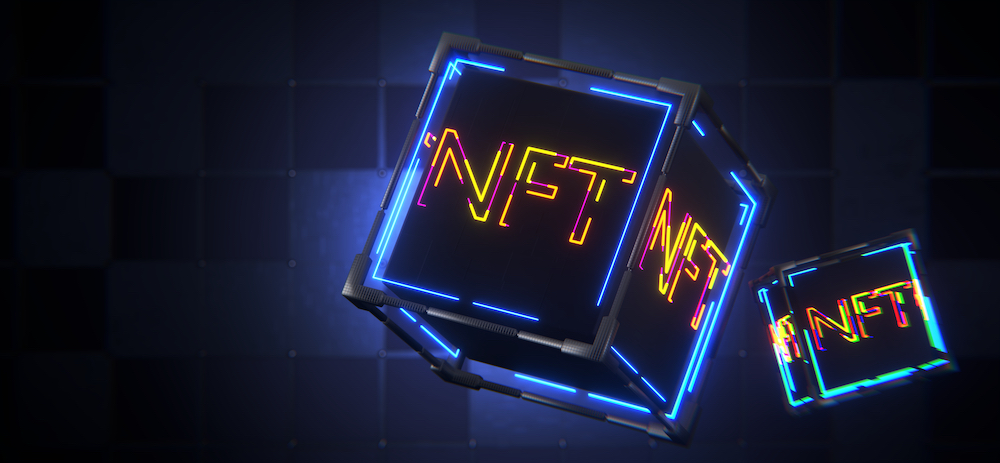As we spend more time online – collecting digital stuff and exploring virtual worlds – we may need better ways to prove who we are and protect what we own. Passwords and security questions are not always enough anymore. That’s where a new idea comes in: biometric NFTs. These special tokens combine blockchain technology with unique parts of your biology, such as your face or fingerprint, to keep your digital assets safe.
What are biometric NFTs?
An NFT is like a unique digital asset stored on a blockchain. It could be a digital work of art, fractionalized real estate, or an asset in a video game. Now imagine that you have an NFT attached to you biometric data– for example, your facial features. This creates a direct link between you (a unique person) and your NFT. Instead of just hoping that a password is strong enough, your face or fingerprint helps prove that you own something. In other words, it’s a more personal and foolproof way to prove ownership and verify identity in the digital world.

Why better security is important
Digital assets – from rare digital art and virtual collectibles to entire digital worlds – have dramatically increased their popularity and value. But as more people buy, sell and trade these items, the risk of fraud and theft also grows. Traditional logins can be guessed or stolen; even two-factor authentication can fail against determined fraudsters.
Biometric NFTs can add an extra layer of security so that no one else can sneak into your accounts or take your tokens without passing the ultimate test: being yourself.
How biometric authentication works for NFTs
Biometric authentication uses physical characteristics that are unique to you. It can scan your face, read your fingerprint or listen to your voice. When you access your NFT marketplace or digital wallet, a quick facial scan can replace typing long passwords.
The blockchain then confirms that the NFT belongs to the person with these unique characteristics. Because these properties are difficult to fake, scams and burglaries are much less likely.
If you want to transfer or sell your NFT, you will need a transaction confirmation. Using your biometric data means you are essentially ‘signing’ the transaction with your own face or fingerprint.
This biometric digital signature ensures that even if someone gets their hands on your device, he or she still cannot move your NFT without passing the biometric check.
Government and services
Biometric NFTs can also help governments and large organizations manage identities online. Instead of carrying multiple IDs or remembering many passwords, you can use one token linked to your face or fingerprint.
Governments could control access to sensitive information or secure virtual reality rooms, confident that only the right person will get through. This kind of identity management could streamline everything from logging into public services to proving who you are in a digital voting booth.
Looking Ahead: Virtual Worlds and Beyond
The future looks bright for NFT technology. As we spend more time in virtual reality spaces – whether for entertainment, shopping or work – we need better ways to affirm who we are.
Biometric NFTs can make these virtual experiences more reliable. For example, when you enter a virtual world to view a digital art gallery, your face or voice can let you in, give you access to your unique collection, or even unlock special features.

Privacy matters: protecting your data
Of course, no one wants their personal information floating around online. That’s why privacy-preserving methods are so important. An example comes from a South Korean company called Privaseathat developed an app called ImHuman.
This app uses fully homomorphic encryption (FHE), a fancy way of saying it can process your biometric data (like a facial scan) while it’s still encrypted. In other words, even if someone got into the system, he/she would never see your raw data.
With ImHuman, you simply use your phone’s camera to prove that you are a real, unique person. The app then creates a secure, encrypted NFT linked to your biometric data. You can use this NFT as proof without revealing your name, email address or other personal information. Privasea is currently working on its mainnet and testnet to bring this technology to more users, giving them secure access to services, airdrops and rewards in the crypto space.
Putting everything together
Combining biometrics with NFTs and blockchain technology may sound complex, but it could be the key to a more secure digital future. Instead of relying on easily stolen passwords, we rely on something unique to each of us – our biology – backed by the secure mathematics of encryption and blockchain.
As developers figure out the best ways to store and manage this data, we could see more tools that allow everyday people, governments, and businesses to leverage biometric NFTs.
Biometric NFTs offer a fresh, practical way to protect digital items, confirm our identities and ensure we interact with real people online. They take the security of NFTs to the next level, making it easier to buy and sell valuable collectibles, manage digital identities, and communicate securely in virtual environments.
Editor’s Note: Written with the help of AI – Edited and fact-checked by Jason Newey.


